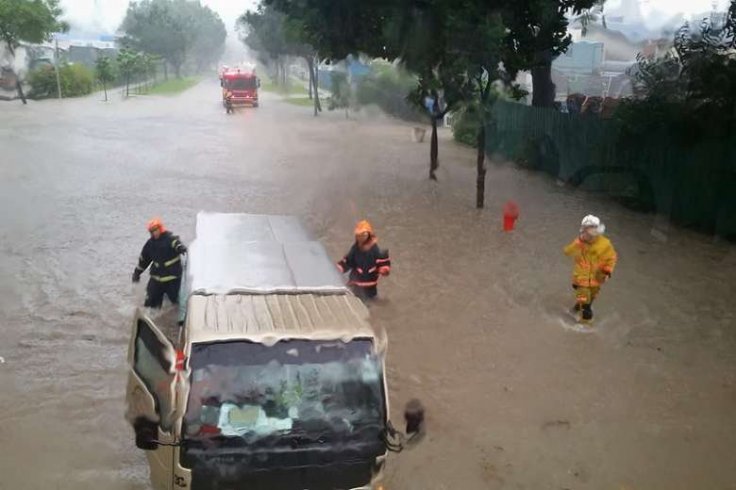
Flash floods from the heavy downpour in Singapore have resulted in waterlogging in the north, east and central regions. Thunderstorms have wreaked havoc in areas like Seletar, Boon Lay, Craig Road and Yishun. Moreover, for the first time since 2013, Singapore witnessed a hailstorm as well, leading to flooding of roads and the destruction of trees. PUB claims that waterlogging due to the flash flood of January 30 exceeded the capacity of the roadside drains.
This is not the first time that Singapore is experiencing widespread flooding. In the 1960s and 1970s, the city-state witnessed heavy flooding during the monsoon seasons, especially in the city center as it was built in a low-lying area.
Flash floods or rapid flooding usually occurs in low-lying areas and can be caused by heavy rain, hurricane, tropical storm or meltwater from glaciers. Even a collapse of a natural dam or man-made dam can also be a cause behind the occurrence of flash floods, for example, the Johnstown flood of 1889.

Soil having low absorption quality can lead to waterlogging post a heavy thundershower, thus leading to the collection of runoffs in streams which join to form fast flowing front of debris and water. Flash floods primarily occur in dry areas that have received rainfall recently. Areas near volcanoes are also vulnerable to flash floods after an eruption. Mountainous ranges of the United States and the arid plains of Southwest US are common zones for flash floods.
Flood-prone areas in Singapore are the low-lying areas with a history of flooding. According to PUB, the area has reduced from 3,200 hectares in the 1970s to 30.5 hectares in 2016. Most of the times the drains cannot cope up with the logged water and the drains aren't designed to hold extremely heavy rainfall. This happens to be the primary reason behind the occurrence of flash floods in urbanized places such as Singapore.
Why Singapore still experiences flash floods:
When runoff exceeds the capacity of the drain mostly in cases of a heavy thundershower. A large amount of runoffs can lead to the overflow of water.
Localized topographic conditions such as depressions on the roads or low-lying grounds, limited options to prevent waterlogging in areas near the sea as drains are tied to downstream levels.
Clogged drains due to the accumulation of debris, leaves, and waste.
With climate change, intense rainfall has become more frequent, thus leading to localized flash floods. It is not possible to eliminate flooding in certain areas. The intensity of the rainfall within a short period of time is a significant factor for determining flash floods and whether or not can the drainage system can hold the water. Marina Barrage helps in controlling the flash floods in the low lying areas of the city such as Chinatown, Boat Quay, Jalan Besar and Geylang.
Precautions:
Pedestrians should be alert when caught in a flash flood. One should move to higher grounds and should refrain from walking near open drains or through flood waters. US National Weather Service claims that people should never try crossing a flash flood as the course of the water, in this case, is highly unpredictable and one can easily be swept away. Authorities report that, on an average, more people die yearly in floods than in hurricane or lightning.
The Kedarnath flash floods in India in 2013 killed as many as 5000 people and the one in Srinagar left 300 dead. Flash flood in Central Texas and West Virginia left as many as 30 people dead.
Helpline numbers:
Toll-free 24-hour call center: 1800-CALL-PUB (1800-2255-782)
24-hour call center international: (65) 6225 5782
Read more








